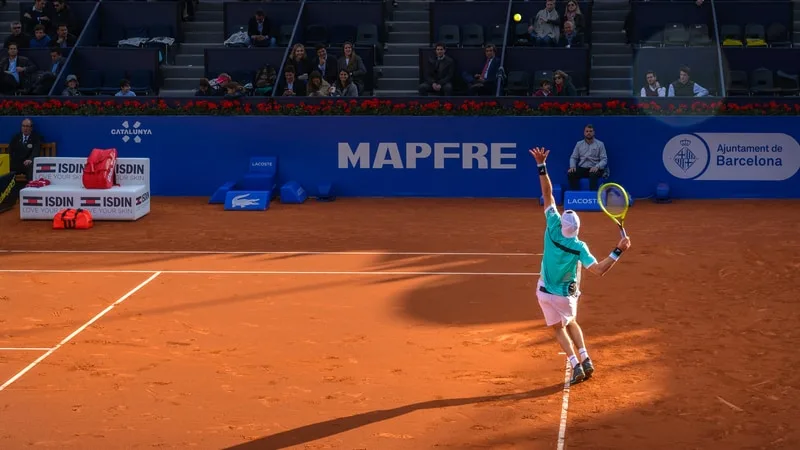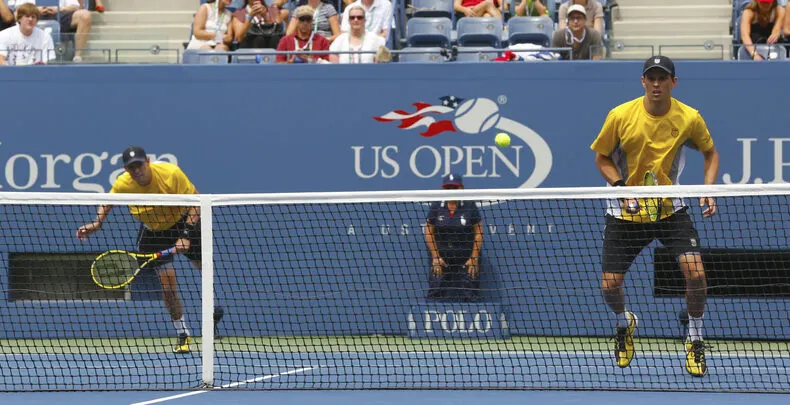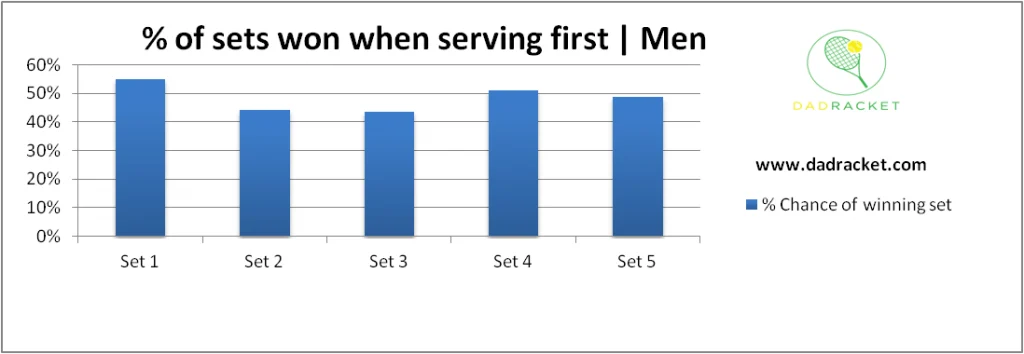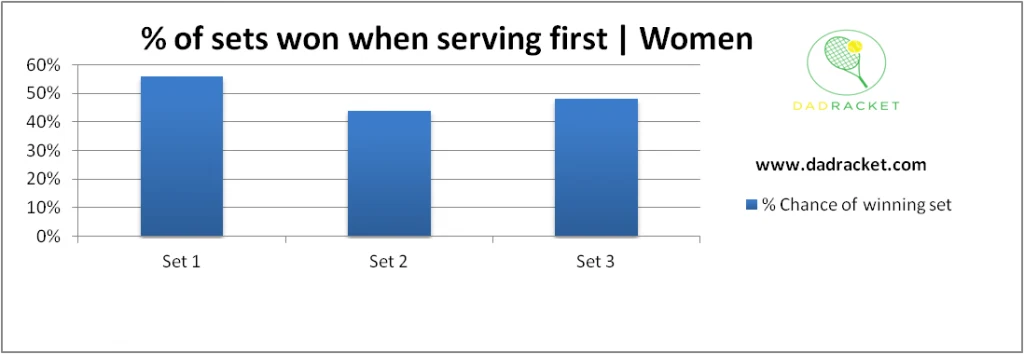
Many new tennis players find themselves wondering about the serve order and how it’s determined. There are several ways to determine who serves first, and in this article, I’ll look at all this in more detail.
Who Serves First In Singles?
Players complete a coin toss or spin their tennis racket to see who will get to choose if they are going to serve or receive. In pro matches, it’s usually a coin toss, but at the club and recreational level, it can be either.
For a coin toss, it’s the usual “heads vs tails”.
However, for a racquet spin, it’s usually decided by choosing whether the logo on the butt of the racket is pointing up or down. The person who doesn’t spin the racket is the one who gets to call.
2 ways to determine who serves first:
- Coin Toss
- Racket Spin
The person who wins the coin toss or racket spin is able to choose whether they want to:
a) Serve or receive first OR
b) Let the opponent choose OR
c) Choose a side.
In almost all competitive matches, choosing whether to serve or receive is by far the most common. However, in friendly matches, if you’re feeling kind, you may let the opponent decide if they want to serve or receive first.
After the person who’s won the coin toss has decided what they want to do, it’s the other person’s turn to make a decision.
Normally, choosing a side is the most common situation here, as most people choose to receive or serve first if they win the toss.
While this may not seem very advantageous, being able to pick the side of the court can have a huge impact on the outcome of the game, especially as players’ change ends after the first game, then every 2 after that.
At recreational, and even professional levels, very sunny days can make tennis difficult, and for that reason, the person who loses the coin toss may want to place the opponent so that the sun is in his or her eyes.
The wind can play a big factor as well.
This is certainly true at my local tennis courts. There seems to be a prevailing wind sometimes when I play and it can make a big difference to the game.
Serving Order In Tiebreak
| Serving Order | Tiebreak |
|---|---|
| Player A (Player who didn’t serve in the last game before tiebreak) | Point 1 |
| Player B | Point 2 |
| Player B | Point 3 |
| Player A | Point 4 |
| Player A | Point 5 |
| Player B | Point 6 |
| Player B | Point 7 |
| Player A | Point 8 |
| Player A | Point 9 |
The player who didn’t serve in the game before the tiebreak gets things started here. This player serves just the FIRST point, from the deuce side (right to left from the server’s point of view).
Then the other player serves for the next TWO points, starting from the ad side.
Then it goes back to the first server again who serves for TWO points as well. Until 6 points (or a multiple of 6 points) have been played and the player’s switch ends.
The winner of the tiebreak is the first to reach 7 points, but you must win by 2 clear points.
So the final tiebreak score could be 7-5, 8-6, 9-7, 10-8, etc.
The person who received first during the tiebreak has the first service game at the start of the next set.
Who Serves First In Doubles?

When playing a game of tennis doubles, not only do players have to decide which team serves first, using a coin toss or racquet spin, but also which player is going to serve first.
The team that serves first chooses between themselves which player will be the first server.
In the second game of the set, the opponents get to serve, and they are allowed to choose which of the teammates are going to serve first.
During the third game, the partner of the player who served in the first game gets to serve.
And finally, during the fourth game, the partner of the player who served second finally gets to serve.
Players continue with this rotation until the end of the set.
In rotating serves this way, it’s very easy for players to keep track of who has served and who has not. This ensures that everyone is given an equal opportunity for serving and that nobody misses out.
Doubles players have a lot to think about when deciding who will serve first from their duo.
Usually, the stronger server is often the player who goes first.
If nothing else, the weaker player should consider deferring to the stronger server and allowing that player to decide who is going to serve first.
Getting the first game under your belt can create momentum and increase your chances of winning the set or match.
What Happens During a Doubles Tiebreak?
In doubles, the same principles apply as a singles tiebreak.
The team who didn’t serve in the last game of the set, serve first during the tiebreak serve for the FIRST point, and then another player of the opposing team serve for the next TWO points.
The tiebreak then plays out with each team serving for TWO points, rotating between all the players.
Is It An Advantage To Serve First In Tennis?
It’s a very good question, and it’s quite tricky to answer. The surface can make a difference, and the advancements in the technology of the tennis racket and strings can also be a factor.
Here’s a chart showing the percentage chance of men winning a set if they serve first.


This data is based on a study of tennis at Wimbledon by Professor Jan Magnus. Surprisingly, on average, serving first doesn’t seem to give a player the big advantage you’d think on either the men’s or the women’s game.
It should be noted that this study is over 20 years old and the game has changed a lot since then. Also, grass is the fastest surface, and this should favor the server more than the slower clay courts at the French Open.
Also, you need to bear in mind that that the player who serves first in the 2nd, 3rd, and 4th sets is the player who received in the last game of the previous set.
As the stronger player will likely win the first set on his serve, the weaker player will always serve first in the other sets. This might explain the dip in the stats in sets 2 and 3.
